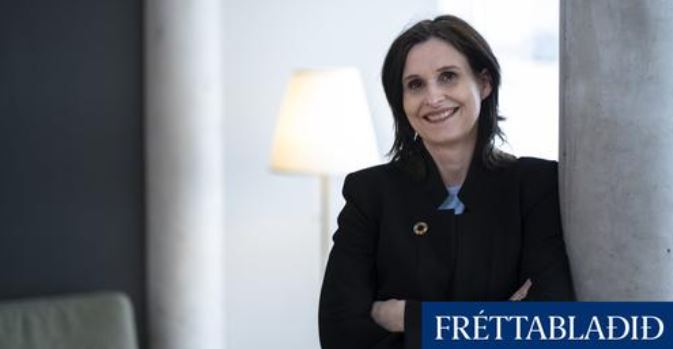
Clear strategies work wonders
Isavia has developed an ambitious sustainability policy divided into four areas of focus: the environment (with climate a dominant issue), utilizing resources, social aspects (with the emphasis on quality of life) and economic aspects (looking at value creation). The following is an interview Hrönn Ingólfsdóttir, Director of Corporate Strategy & Sustainability at Isavia, gave Icelandic Newspaper Fréttablaðið.
“Isavia previously had separate policies dealing with corporate social responsibility and the environment. We have now brought these two policies together into a single sustainability policy and updated our five-year action plan in this field. The reason for combining the two policies is the developments that have taken place in this field in recent years, in both the internal and external environment of the company,” explains Hrönn Ingólfsdóttir, Director of Corporate Strategy & Sustainability at Isavia. “The new policy addresses climate issues even more clearly than before.
The policy is divided into four areas of focus: the environment (including climate issues), proper utilization of resources, social aspects (focusing on quality of life) and economic aspects (looking at value creation). In our experience, a clear policy delivers results faster and enables us to make our direction clearer within the company.
Our sustainability policy is directly linked to the company’s overall strategy, which we also reviewed last year. Sustainability is all-encompassing in everything we do and is one of the company’s strategic priorities.
Success in this field requires senior management to have a good understanding of the issues involved. This is not a given, even in 2022, but Isavia’s management are very much in support of the way forward.”
Carbon-free by 2030
According to Ingólfsdóttir, one of the company’s climate priorities is to achieve carbon-free operations by 2030.
“We analyzed how this could be done. We had already committed to becoming Net Zero by 2050, by signing a declaration by Airports Council International (ACI), but then airports began to bring things forward and many people believed that it could be done by 2030. We were interested in this idea, but we wanted to make sure we could handle the task. We therefore commissioned a detailed analysis of Isavia’s fleet of over 140 vehicles at the parent company.
The lion’s share of our carbon footprint comes from fuel use. The most difficult task is to replace the runway-clearing equipment, as that is where technology has progressed the least.
We wanted to make sure we could do it, so the 2030 carbon-free goal is based on in-depth analysis.”
Utilizing resources
As regards utilizing resources, Ingólfsdóttir explains that the focus is on sustainable procurement and reducing negative environmental impact.
“We are working on measures to ensure Isavia’s circular economy. We shall then look at developing our infrastructure in a sustainable way – there is a great deal of development work on the horizon at Keflavík International Airport. We want to get this done in the greenest way possible and achieve BREEAM environmental certification. We are working together with overseas consultants who are assisting us in this regard. In all work of this kind, it is also very important to enjoy good co-operation with all stakeholders inside and outside Keflavík International Airport.”
Co-operation
As regards social aspects, and specifically quality of life, Ingólfsdóttir explains that Isavia is striving to be a role model for sustainability in Iceland.
“We are improving sustainability among the community at Keflavík International Airport. Staff enjoy good co-operation with our partners and are working with airport operators on various improvements in this area. The company shares its know-how and learns from them. We hope to achieve success as a whole. This is why we are getting others on board – it is also our responsibility, even though we run only part of the airport, to ensure that others do well. We are also working together with the local community. Isavia is part of a co-operation initiative called ‘Suðurnes Forum’, where we work very closely and systematically with the four municipalities of Suðurnes, Kadeco, and the Association of Suðurnes Municipalities on projects for improvement.”
Long-term added value
As regards economic aspects, Ingólfsdóttir says that Isavia wants to achieve sustainability here, too.
“We want to create long-term added value in the economy. As an airport, Isavia has a certain responsibility in this regard, and we are guided by sustainability in our decision-making. Sustainability is all-encompassing in our strategy and thinking. This is a journey – and we mustn’t lose sight of promoting progress and continuous improvement. There are new trends and strategies in this field, which we need to constantly monitor and try to do better. Rome wasn’t built in a day.”
Importance of operations
This is a record year for construction work at Isavia, and the company’s plans must line up with its sustainability policy.
“Isavia’s goal is to lead an airport community that improves quality of life and increases prosperity in Iceland – and we are doing this by connecting the world via Iceland. By increasing the number of flight connections, we are also increasing economic growth in Iceland – it is estimated that a 10% increase in flight connections means a 0.5% increase in economic growth. In that context, the purpose of our expansion is not only to be able to provide services to our customers, but also to achieve economic growth. Construction is, by its very nature, not a green activity, but we hope to do it in as sustainable a way as possible, e.g. by selecting materials with a lower embodied carbon footprint.
We have recently achieved ISO14001 environmental certification. We attach great importance to having a certified environmental management system covering our operations. This certification confirms our sustainability priorities. Our staff have received training covering our environmental management system, certification and the company’s sustainability policy. It is essential for our people to know where we are going and how we are going to get there. Together we will succeed.”
See isavia.is for more information.
